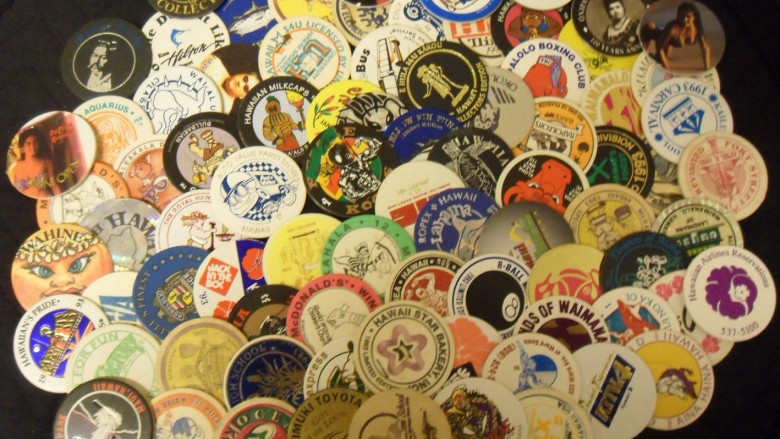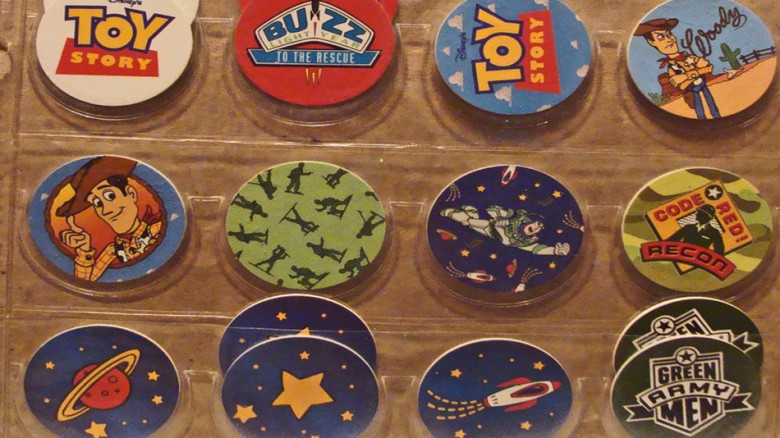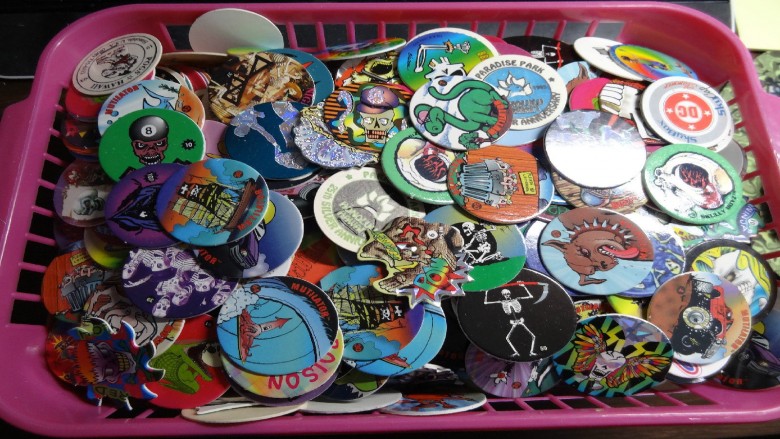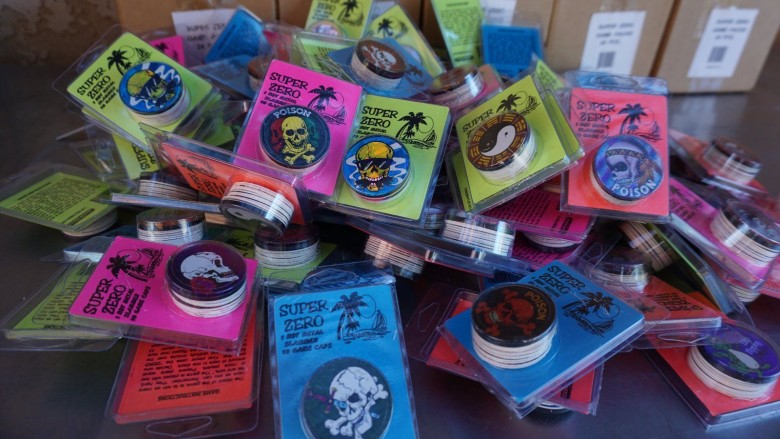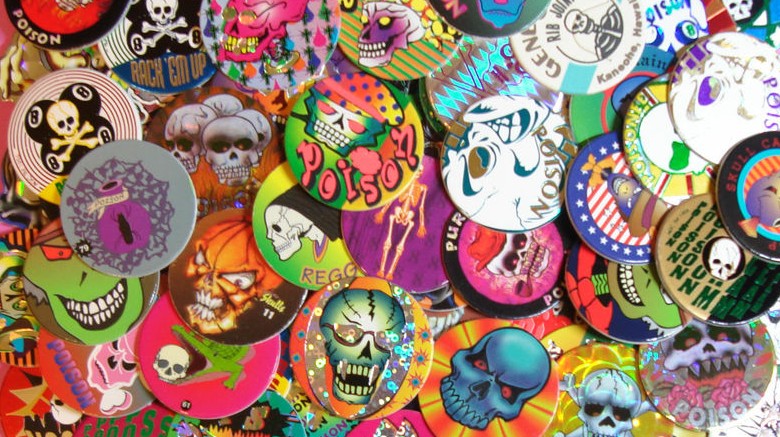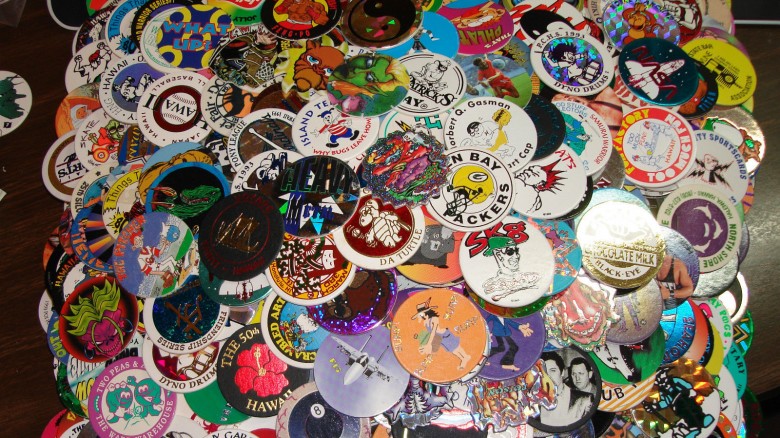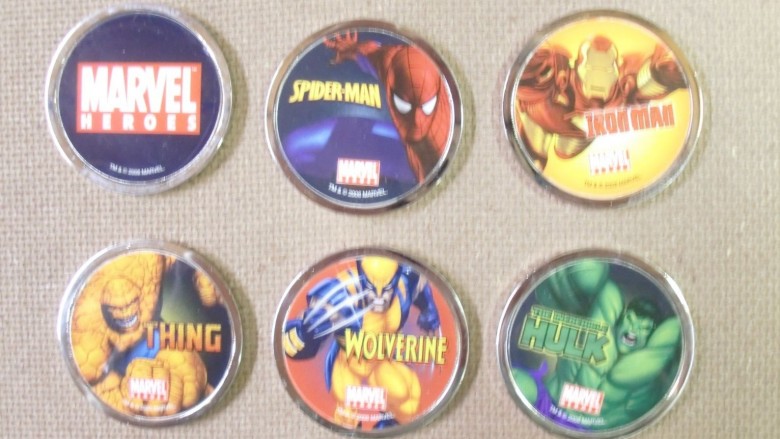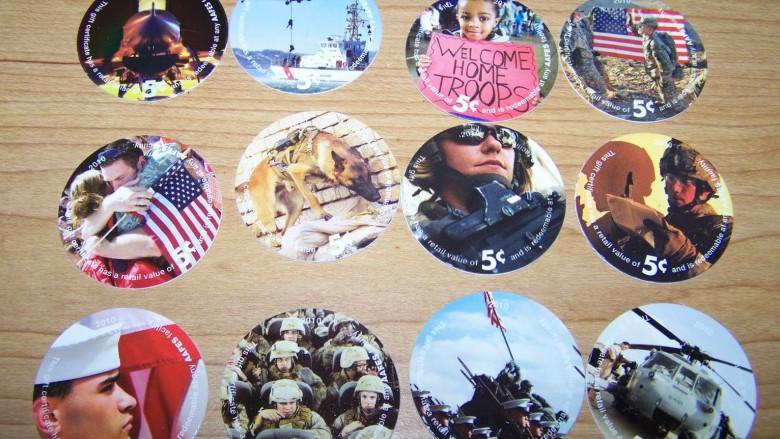The Real Reason Why Pogs Disappeared
Like most fads of the 1990s, like Hammer Pants and Pauly Shore's career, it's difficult to explain why Pogs were ever considered desirable. Or even explain them at all. At least Pokemon had a video game world to explore, and at least Beanie Babies were actual stuffed animals. Pogs, though? Why were they called "milkcaps" when they are mere cardboard disks? What do you do with them? And what happened to kill the fad so fast?
We're gonna dive in and explain the whole rise and fall of this addictive, yet shockingly simple, game.
Pogs evolved from a playground game into a collectible culture
Pogs began as a playground game in Hawaii in the 1920s, using caps from a popular juice there produced by Haleakala Dairy. The game is actually named after the juice, which is in turn named after the ingredients: passionfruit, orange, and guava. The game bears passing resemblance to other playground games, like tiddlywinks and marbles, but is closest to an ancient Japanese game called Menko.
The '90s version of the game can be traced to a Hawaiian schoolteacher named Blossom Galbiso, who wanted to introduce her students to the game she played as a child. It quickly spread to mainland America, where they began being printed with different images, enhancing their collectability. And the whole thing quickly grew out of control from there.
Big companies began using them for marketing, and Pogs were no longer associated with juice
Unless you were actually from Hawaii, or certain parts of the West Coast that Haleakala Dairy distributed to, it's unlikely you even knew Pogs were associated with a juice brand. This is because of the World Pog Foundation, which we assure you is an actual thing. It's like the World Bodybuilding Federation, but in Pog form.
Founded by businessman Alan Rypinski, who managed to snatch up the Pog trademark for himself from Haleakala Dairy, the Foundation helped universalize the game and opened it up for marketing opportunities unassociated with the juice. Next thing you know, all the biggest brand names were creating their own for marketing purposes.
The market became completely oversaturated
This universality and open-branding promoted by the World Pog Federation ultimately proved to be the downfall of the product. The market became oversaturated quickly, as Rypinski granted licenses to pretty much anyone that paid up for it.
Burl Burlingame, author of Coverama: The Collector's Guide To Antique Hawaiian Milk Covers (anyone can write about anything, you see) documented the Pogs bubble bursting. "It was consumed by its own success and excess," Burlingame observes, "Pogs were so cheap and easy to replicate that everyone jumped into the game. People started putting sparkles in them, trying to make them unique in some way. There was too much product: you couldn't keep up."
Television shows, bands, sports figures, government agencies, President Bill Clinton, the OJ Simpson trial, and even the Pope had commemorative Pogs. It's possible that a strategically cultivated Pog collection could potentially be an effective historical time capsule of the mid-1990s.
The game was so competitive, it burned fans out
A game like Pogs, where highly desired items are put on the chopping block every session, and the winner takes everything, understandably leads to emotions running pretty high. Competition was pretty cutthroat for a playground game, and it wasn't like you could go on eBay and buy back a coveted Pog you lost to the luck of the draw back then. This led to a lot of fans of the game burning out because, as any kids or adult will tell you, losing stinks.
Schools started banning them
Another thing about a game where highly desired items are put on the chopping block every session and winner takes all, is that it certainly seems a lot like gambling. In fact, it basically was. While other playground games like marbles also had a winner-take-all game element, Pogs were pricier and the game itself seemed much more suspicious, with its reliance on pure luck, rather than skill.
Then there's the issue of coin-like prizes — as such, schools across the country started banning the game and tokens, drastically limiting the availability for kids to gather and play the game. And as we all know, most kids have the attention span of a gnat, especially when it comes to fads. Not letting them play at school gave them plenty of time to forget about the game and focus on other, cooler fads. Like hackey sacks.
Haleakala Dairy began to sue
You have to feel pretty bad for Haleakala Dairy at this point, losing out on the ability to profit on a massive craze literally named after one of their products, and then have that same product's name associated with childhood gambling. They actually began repackaging their own Pog juice in cartons rather than bottles, just to distance it from the bad reputation.
Eventually, tensions ran so high, they began filing lawsuits to gain control of the message of their product again. This bit of legality was pretty much the death knell for the product — some companies tried to resurrect interest, with knock-offs like Tazos and Slammer Whammers (what a bunch of scammers), but never recaptured the fad.
An attempted reboot came and went
In 2005, the Funrise company bought the trademark for Pogs and began printing and distributing new ones, hoping to reboot the product. They held several promotional events attempting to generate buzz, but it never really picked up because people like to think about nostalgic fads, but not actually do anything with them. Eventually, their trademark expired and the reboot experiment was discontinued.
They've had the most consistent success in the last place you'd expect
Pogs are still around, however, and actually very successful, though not in any toy store, or anywhere else you would expect. In 2001, during Operation Enduring Freedom in Afghanistan, commanders and base leaders realized they had a problem. Transactions at AAFES (a military department store found on bases around the world) require coins, and coins are heavy. It simply wasn't economical to take up space and weight in overseas shipments to get coins to the soldiers, so AAFES started issuing Pog-like cardboard disks in 5, 10 and 25-cent denominations, that they would then accept as currency.
It worked. $100 in quarters weighs 5.6 lbs, where the same amount of Pog bucks weighs less than a pound. This drastically reduced shipping costs, and soldiers collected them and still use them even now, a decade-and-a-half later. No word on how much a Pope Pog is worth, but we're going to say ... priceless.

